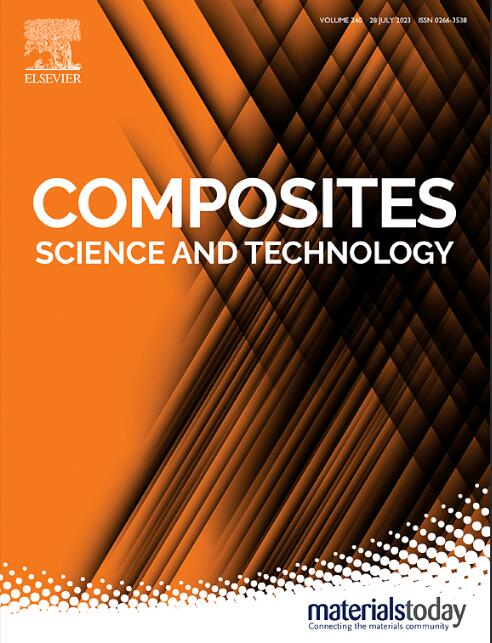通过界面改性提高CF/PPS复合材料的层间性能和抗冲击损伤性能
IF 8.3
1区 材料科学
Q1 MATERIALS SCIENCE, COMPOSITES
引用次数: 0
摘要
由于层间损伤、纤维断裂和基体裂纹等失效事件的增加,增强复合材料结构在冲击载荷下的力学响应已被证明是具有挑战性的。尽管热塑性复合材料具有令人印象深刻的抗冲击性,但其断裂韧性在一定程度上受到纤维-基体界面相互作用的影响。本研究通过在碳纤维(CF)增强聚苯硫醚(PPS)复合材料(CF/PPS)表面涂覆一层聚醚砜(PES),构建了碳纤维(CF)增强聚苯硫醚(PPS)复合材料(CF/PPS)的界面,增强了纤维与基体的相互作用。纤维与PES之间的氢键结合以及PES施胶剂的高模量显著改善了混溶性和界面联锁性,使层间剪切强度提高了40.7%。在相同冲击能下,改性复合材料的最大冲击载荷和回弹冲击能均优于未改性复合材料。改性后的CF/PPS复合材料没有出现“金字塔”形的冲击破坏,且冲击后压缩(CAI)值提高了25% ~ 33%。这是由于界面改性而显著增加抗冲击性和增强界面性能的基础。本文章由计算机程序翻译,如有差异,请以英文原文为准。
Enhancing the interlaminar behavior and impact damage resistance of CF/PPS composites via interface modification
The mechanical response of reinforced composite structures to impact loads has proven to be challenging due to increased incidents of failures like interlaminar damage, fiber fractures, and matrix cracks. Notwithstanding the impressive impact resistance of thermoplastic composites, their fracture toughness is somewhat impacted by the fiber-matrix interface interaction. In this study, the interface of carbon fiber (CF) reinforced polyphenylene sulfide (PPS) composites (CF/PPS) were built through coating a thin layer of polyether sulfone (PES) on CFs to enhance interactions between fibers and matrix. The combination of hydrogen bonding between fiber and PES as well as the higher modulus of the PES sizing agent significantly improved the miscibility and interfacial interlocking, resulting in a 40.7 % increase in interlaminar shear strength. Under the same impact energy, the modified composites outpaced the non-modified ones in maximum impact load and rebound impact energy. The "pyramid" shape impact destruction seen in CF/PPS composites was absent in modified ones, which also showed a 25 %–33 % higher compression after impact (CAI) value. This underpins the significant increase in impact resistance and enhanced interfacial performance due to interfacial modifications.
求助全文
通过发布文献求助,成功后即可免费获取论文全文。
去求助
来源期刊

Composites Science and Technology
工程技术-材料科学:复合
CiteScore
16.20
自引率
9.90%
发文量
611
审稿时长
33 days
期刊介绍:
Composites Science and Technology publishes refereed original articles on the fundamental and applied science of engineering composites. The focus of this journal is on polymeric matrix composites with reinforcements/fillers ranging from nano- to macro-scale. CSTE encourages manuscripts reporting unique, innovative contributions to the physics, chemistry, materials science and applied mechanics aspects of advanced composites.
Besides traditional fiber reinforced composites, novel composites with significant potential for engineering applications are encouraged.
 求助内容:
求助内容: 应助结果提醒方式:
应助结果提醒方式:


